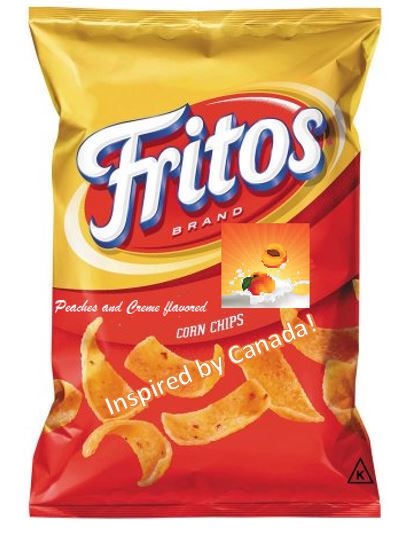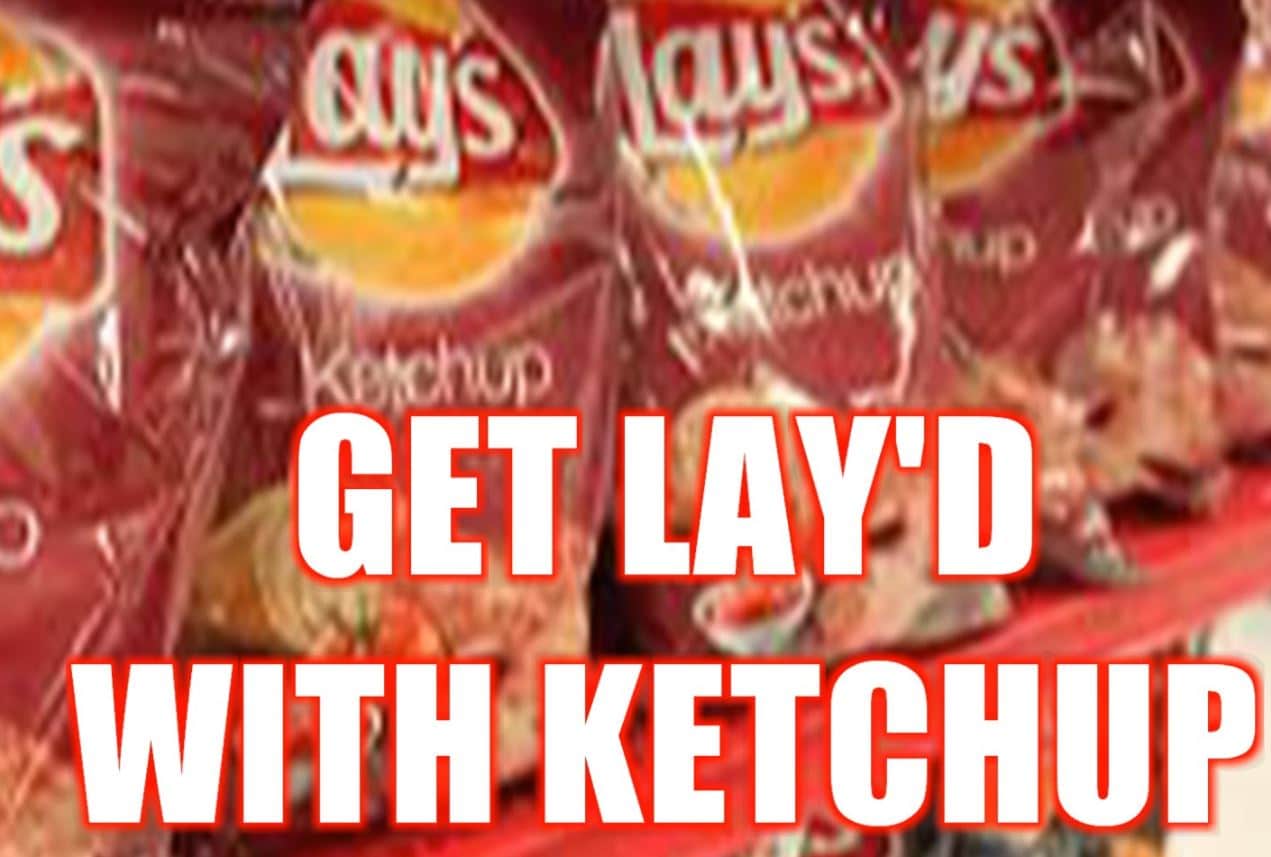You can find some interesting things on the Internet (and in Canada). Use research and visual literacy skills to determine which products are real and which are fake.

Ketchup Doritos? Sounds weird to Americans, but quick searches at retail websites, such as amazon.com, walmart.com, and ebay.com, reveal that this is an actual product being sold in the world today. Read more at Fast Company about the Canadian Ketchup chip phenomenon.

Peaches and cream corn sounds delicious. Like that relative at Thanksgiving who doesn’t mind when his desert and his main course sit on the same plate and all run together so that the whipped cream from the fruit salad and the gravy from the turkey form a huge, creamy swamp. Mmmmm. Except this is a real product, and calling it “peaches and cream” is just the Canadians’ clever way of saying that it is “sweet corn.” Fortunately for humankind, there are no peaches involved in this corn at all.

A misunderstanding of Canadian marketing led Frito-Lay to create Peaches and Creme flavored Fritos. Just kidding. This is obviously a fake image. Looking closely at it will reveal the poor image manipulation. Also, searching on http://www.fritolay.com/ reveals that no such product exists.

This poor Photoshop job doesn’t even get all of the words on the image. Plus, the bags are blurry in the background. So it looks like these Ketchup Lays are an internet hoax. But looks can be deceiving. If you search on retail websites and the fritolay.com, you will find that these are a real, actual product in Canada (and other ketchup-loving locations worldwide).
The Internet is a playground of image manipulation, and people do so for innocent fun, political manipulation, and many other reasons. When you see an image on the Internet, look for tell-tale signs of manipulation and seek confirmation from other sources BEFORE you share.
How to Spot Image Manipulation
Poynter.org recommends that you check three things:
Check the file and metadata. Digital photos contain metadata which you can view using readily available tools and addons.
Look for telltale tool marks. Photo editing software tools often leave tell-tale signs, such as differing textures, blurred lines, or curves in backgrounds that should be straight.
Search shadows and reflections. Look for shadows and reflections to make sure they are where they are supposed to be.
Lifehack.org offers similar advice:
Look for bent or liquid looking surfaces that should otherwise appear solid.
Look for distorted pixelation in color and textures.
Look for obvious errors, such as body parts that are out of proportion with the rest of the image.
Sciencemag.org has additional examples of image manipulation. Can you tell which have been manipulated?